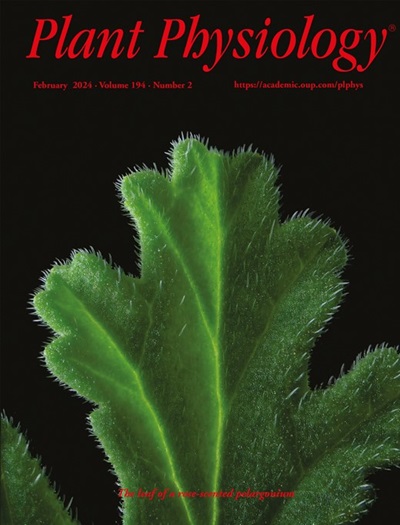Differential impact of dawn and dusk watering on tomato metabolism and biomass allocation
IF 6.5
1区 生物学
Q1 PLANT SCIENCES
引用次数: 0
Abstract
Water supply constraints limit crop yield across seasons and locations, restricting food production under diverse climate scenarios. Irrigation schedules that align with plant water demand at specific times of the day have been proposed to overcome limitations in the water supply. Watering crops in the morning has been associated with reductions in productivity, although the mechanisms underlying this phenomenon remain poorly understood. Here, we demonstrate that watering tomato (Solanum lycopersicum) at different times of the day alters the transcriptional patterns of genes controlling flowering induction. Dawn-watering (DAW) triggered a strong repression of the Single Flower Truss (SFT) gene, leading to metabolite accumulation and delayed development. Dusk-watered (DUW) plants showed increased fruit production compared to DAW-treated plants. Our findings highlight how metabolism and development in tomato are remodeled by the timing of watering, suggesting strategies to enhance tomato water-use efficiency (WUE) by incorporating time-specific watering practices in agriculture.黎明和黄昏浇水对番茄代谢和生物量分配的差异影响
供水限制限制了不同季节和地点的作物产量,限制了不同气候情景下的粮食生产。为了克服供水的限制,已经提出了与植物在一天中的特定时间的用水需求相一致的灌溉计划。尽管人们对这一现象背后的机制知之甚少,但在早上给作物浇水与生产力下降有关。在这里,我们证明了在一天中的不同时间浇灌番茄(Solanum lycopersicum)会改变控制开花诱导的基因的转录模式。黎明浇水(DAW)触发了单花桁架(SFT)基因的强烈抑制,导致代谢物积累和发育延迟。黄昏浇水(DUW)的植株比黄昏浇水(daw)的植株产量更高。我们的研究结果强调了灌溉时间如何重塑番茄的代谢和发育,提出了通过在农业中结合特定时间的灌溉实践来提高番茄水分利用效率(WUE)的策略。
本文章由计算机程序翻译,如有差异,请以英文原文为准。
求助全文
约1分钟内获得全文
求助全文
来源期刊

Plant Physiology
生物-植物科学
CiteScore
12.20
自引率
5.40%
发文量
535
审稿时长
2.3 months
期刊介绍:
Plant Physiology® is a distinguished and highly respected journal with a rich history dating back to its establishment in 1926. It stands as a leading international publication in the field of plant biology, covering a comprehensive range of topics from the molecular and structural aspects of plant life to systems biology and ecophysiology. Recognized as the most highly cited journal in plant sciences, Plant Physiology® is a testament to its commitment to excellence and the dissemination of groundbreaking research.
As the official publication of the American Society of Plant Biologists, Plant Physiology® upholds rigorous peer-review standards, ensuring that the scientific community receives the highest quality research. The journal releases 12 issues annually, providing a steady stream of new findings and insights to its readership.
 求助内容:
求助内容: 应助结果提醒方式:
应助结果提醒方式:


